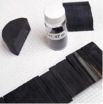(Press-News.org) Autistic-like behaviors can be partially remedied by normalizing excessive levels of protein synthesis in the brain, a team of researchers has found in a study of laboratory mice. The findings, which appear in the latest issue of Nature, provide a pathway to the creation of pharmaceuticals aimed at treating autism spectrum disorders (ASD) that are associated with diminished social interaction skills, impaired communication ability, and repetitive behaviors.
"The creation of a drug to address ASD will be difficult, but these findings offer a potential route to get there," said Eric Klann, a professor at NYU's Center for Neural Science and the study's senior author. "We have not only confirmed a common link for several such disorders, but also have raised the exciting possibility that the behavioral afflictions of those individuals with ASD can be addressed."
The study's other co-authors included researchers from the University of California, San Francisco (UCSF) and three French institutions: Aix-Marseille Universite'; Institut National de la Santé et de la Recherche Médicale (INSERM); and Le Centre National de la Recherche Scientifique (CNRS).
The researchers focused on the EIF4E gene, whose mutation is associated with autism. The mutation causing autism was proposed to increase levels of the eIF4E, the protein product of EIF4E, and lead to exaggerated protein synthesis. Excessive eIF4E signaling and exaggerated protein synthesis also may play a role in a range of neurological disorders, including fragile X syndrome (FXS).
In their experiments, the researchers examined mice with increased levels of eIF4E. They found that these mice had exaggerated levels of protein synthesis in the brain and exhibited behaviors similar to those found in autistic individuals—repetitive behaviors, such as repeatedly burying marbles, diminished social interaction (the study monitored interactions with other mice), and behavioral inflexibility (the afflicted mice were unable to navigate mazes that had been slightly altered from ones they had previously solved). The researchers also found altered communication between neurons in brain regions linked to the abnormal behaviors.
To remedy to these autistic-like behaviors, the researchers then tested a drug, 4EGI-1, which diminishes protein synthesis induced by the increased levels of eIF4E. Through this drug, they hypothesized that they could return the afflicted mice's protein production to normal levels, and, with it, reverse autistic-like behaviors.
The subsequent experiments confirmed their hypotheses. The mice were less likely to engage in repetitive behaviors, more likely to interact with other mice, and were successful in navigating mazes that differed from those they previously solved, thereby showing enhanced behavioral flexibility. Additional investigation revealed that these changes were likely due to a reduction in protein production—the levels of newly synthesized proteins in the brains of these mice were similar to those of normal mice.
"These findings highlight an invaluable mouse model for autism in which many drugs that target eIF4E can be tested," added co-author Davide Ruggero, an associate professor at UCSF's School of Medicine and Department of Urology. "These include novel compounds that we are developing to target eIF4E hyperactivation in cancer that may also be potentially therapeutic for autistic patients."
### The study's other co-authors were: Emanuela Santini, the study's lead author, Thu Huynh, Andrew MacAskill, Adam Carter, and Hanoch Kaphzan of NYU's Center for Neural Science; and Philippe Pierre of Aix-Marseille Université, INSERM, and CNRS.
The research was supported by grants from the National Institutes of Health (NS034007, NS047384, NS078718, and CA154916), a Department of Defense Congressionally Directed Medical Research Program award (W81XWH-11-1-0389), and the Wellcome Trust.
Neuroscientists find excessive protein synthesis linked to autistic-like behaviors
2012-12-24
ELSE PRESS RELEASES FROM THIS DATE:
3 new genetic links to colorectal cancer
2012-12-24
Vanderbilt-Ingram Cancer Center investigators have identified three new genetic "hotspots" linked to colorectal cancer.
These variants, reported Dec. 23 in an Advanced Online Publication in Nature Genetics, provide new insight into the biology of colorectal cancer – and could represent new therapeutic targets for the disease.
Colorectal cancer is one of the most commonly diagnosed cancers worldwide – and rates are particularly high in the United States and other developed countries. Genetics plays an important role in both sporadic and familial (inherited) forms of ...
OpGen announces sequence assembly and finishing of first reference genome of domestic goat
2012-12-24
Gaithersburg, Md.—December 23, 2012— OpGen, Inc. today announced its ARGUS® Whole Genome Mapping System technology was used in combination with next-generation sequencing (NGS) to produce the first, high-quality reference genome of the domestic goat. The study, which was led by BGI-Shenzhen and Kunming Institute of Zoology, Chinese Academy of Sciences was published online today in Nature Biotechnology. The paper, titled Sequencing and automated whole-genome optical mapping of the genome of a domestic goat (Capra hircus), demonstrates the value, efficiency and cost effectiveness ...
Study turns parasite invasion theory on its head
2012-12-24
Current thinking on how the Toxoplasma gondii parasite invades its host is incorrect, according to a study published today in Nature Methods describing a new technique to knock out genes. The findings could have implications for other parasites from the same family, including malaria, and suggest that drugs that are currently being developed to block this invasion pathway may be unsuccessful.
Toxoplasma gondii is a parasite that commonly infects cats but is also carried by other warm-blooded animals, including humans. Up to a third of the UK population are chronically ...
The first goat genome sets a good example for facilitating de novo assembly of large genomes
2012-12-24
December 23, 2012, Shenzhen, China – In a collaborative study published online today in Nature Biotechnology, researchers from Kunming Institute of Zoology, Chinese Academy of Sciences, BGI, and other institutes, have completed the first genome sequence of domestic goat by a robust approach integrated with next-generation sequencing (NGS) and whole-genome mapping (WGM) technologies. The goat genome is the first reference genome for small ruminant animals and may help to advance the understanding of distinct ruminants' genomic features from non-ruminant species. This work ...
Gout study offers genetic insight into 'disease of kings'
2012-12-24
Scientists have shed light on why some people are more susceptible to gout than others. A study has identified 18 new genetic variations that increase levels of uric acid in the blood, which is the main cause of the disease.
High levels of uric acid form small crystals in joints and tissues, causing pain and swelling – the main symptoms of the condition once known as the 'disease of kings'.
Gout is the most common form of inflammatory arthritis, affecting up to two per cent of the world's population.
Understanding how these common genetic variants increase uric ...
New findings in the search for genetic clues to insulin production
2012-12-24
(Embargoed) CHAPEL HILL, N.C. – In research published online Dec. 23, 2012 in the journal Nature Genetics, scientists have found three new and relatively rare genetic variants that influence insulin production, offering new clues about the genetic factors behind diabetes..
"Studying genetic variants — even rare ones — helps us learn how genes affect health and disease," said Karen Mohlke, PhD, one of the study's senior authors and associate professor of genetics at the University of North Carolina School of Medicine. "In this study, we've implicated new genes as playing ...
Decision to give a group effort in the brain
2012-12-24
DURHAM, N.C. -- A monkey would probably never agree that it is better to give than to receive, but they do apparently get some reward from giving to another monkey.
During a task in which rhesus macaques had control over whether they or another monkey would receive a squirt of fruit juice, three distinct areas of the brain were found to be involved in weighing benefits to oneself against benefits to the other, according to new research by Duke University researchers.
The team used sensitive electrodes to detect the activity of individual neurons as the animals weighed ...
Smaller Colorado River projected for coming decades, study says
2012-12-24
Some 40 million people depend on the Colorado River Basin for water but warmer weather from rising greenhouse gas levels and a growing population may signal water shortages ahead. In a new study in Nature Climate Change, climate modelers at Columbia University's Lamont-Doherty Earth Observatory predict a 10 percent drop in the Colorado River's flow in the next few decades, enough to disrupt longtime water-sharing agreements between farms and cities across the American Southwest, from Denver to Los Angeles to Tucson, and through California's Imperial Valley.
"It may not ...
Nutrient-sensing enzymes key to starvation response and survival in newborn mammals
2012-12-24
CAMBRIDGE, Mass. (December 23, 2012) – In the perilous hours immediately after birth, a newborn mammal must survive the sudden loss of food supply from its mother. Under normal circumstances, newborns mount a metabolic response to ward off starvation until feeding occurs. This survival response involves a process of controlled breakdown of internal energetic sources known as autophagy. Although autophagy has been well documented, the key mechanistic regulators of autophagy in vivo have remained poorly understood.
Whitehead Institute researchers have discovered that a ...
New data challenge old views about evolution of early life
2012-12-24
RIVERSIDE, Calif. — A research team led by biogeochemists at the University of California, Riverside has tested a popular hypothesis in paleo-ocean chemistry, and proved it false.
The fossil record indicates that eukaryotes — single-celled and multicellular organisms with more complex cellular structures compared to prokaryotes, such as bacteria — show limited morphological and functional diversity before 800-600 million years ago. Many researchers attribute the delayed diversification and proliferation of eukaryotes, which culminated in the appearance of complex animals ...

